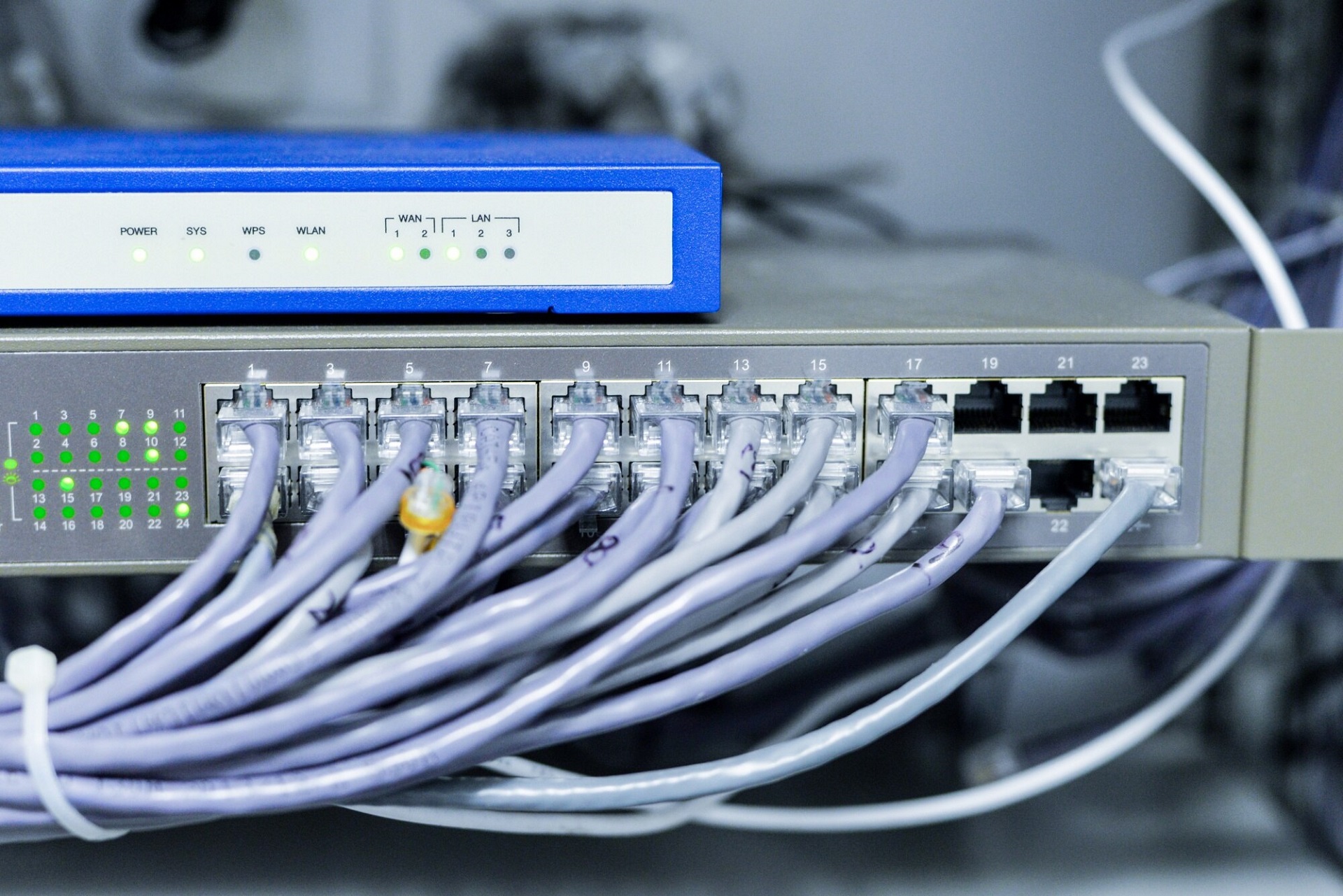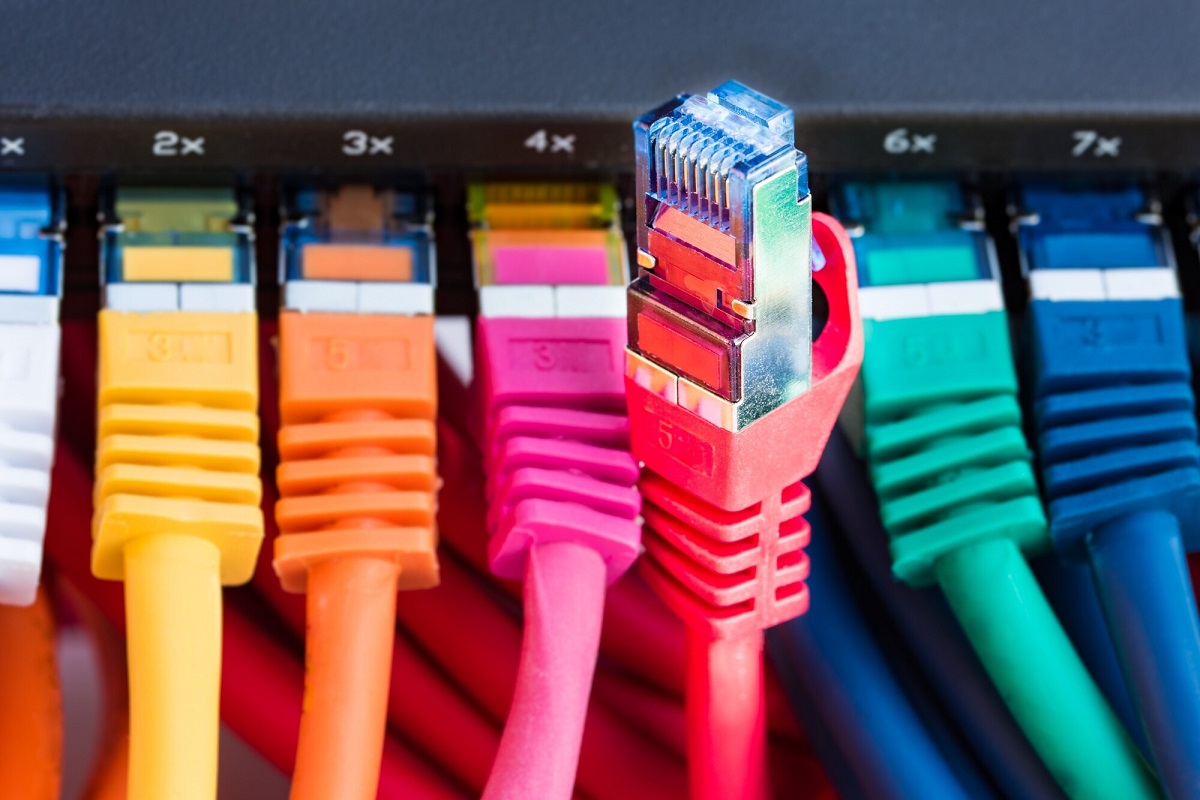- 533 Kings Road Stretford Manchester M32 8JG
- info@esolution247.co.uk
- +44 7767 019748
CCNP
- Home
- CCNP

Teacher:
S Kamran Mustafa
Lectures:
15+
Duration:
4 Weeks
Course Price:
200$
Course Overview
CCNP All-In-1 Video Boot Camp Preview: Let’s Go!
- CCNP All-In-1 Video Boot Camp Preview
- Watching Your Free CCNA Security 210-260 Course
- CCNP Hard Copy Study Guide News!
CCNP SWITCH 300-115: Fundamentals Review
- Fund 1: The Dawn Of Man (And Switching)
- Fund 2: Building The MAC Address Table
- Fund 3: MAC Address Table Aging
- Fund 3A: Dynamically Learned MAC Addresses And VLANs
- Fund 4: SDM Templates
- Fund 5: Autonegotiation, Speed, And Top Rope Duplexes
- Fund 6: Introduction To Power Over Ethernet
- Fund 7: More Power Over Ethernet
CCNP SWITCH 300-115 Exam: VLAN Fundamentals, Configuration, and Troubleshooting
- VLAN Section Network Topology and Addressing
- VLAN 1: The Fundamentals Of Success On Exams And VLANs
- VLAN 2: VLAN Creation And Administration Lab
- VLAN 3: Dynamic VLAN Fundamentals And Real-World VLAN Tip
- VLAN 4: Troubleshooting Lab, Part 1
- VLAN 5: VLAN Troubleshooting Lab, Part 2
- VLAN 6: Trunking Fundamentals
- VLAN 7: The Case Of ISL v. Dot1Q
- VLAN 8: Changing The Native VLAN — Why And How
- VLAN 9: Fundamentals Of DTP
- VLAN 10: DTP Lab, Part 1 (Switch 1)
- VLAN 11: DTP Lab Concludes On SW2
- VLAN 12: Allowing And Disallowing VLANs On A Trunk (Lab 1)
- VLAN 13: Disallowing And Allowing VLANs, Lab 2
- VLAN 14: Voice VLANs
CCNP SWITCH 300-115: VTP: The VLAN Trunking Protocol
- VTP 1: Why And How We VTP
- VTP 2: Modes, Subset Ads, And The Config Revision Number
- VTP 3: Config Revision Number Lab And Advertisement Discussion
- VTP 4: Versions, Passwords, and “Security”
- VTP 5: More Version Info And VTP Pruning
CCNP SWITCH 300-115: Spanning Tree Protocol Fundamentals
- STP 1: It Begins!
- STP 2: Config BPDUs And Root Bridge Election Walkthrough
- STP 3: Identifying Root And Non-Root Bridges
- STP 4: Root Path And Root Path Costs
- STP 5: Watch Your Speeds, Plus Changing Path Cost Lab
- STP 6: Per-VLAN Load Balancing With The Path Cost Option
- STP 7: Per-VLAN Load Balancing With Port Priority, Plus STP Port State Review
- STP 8: The STP Timers
- STP 9: Configuring Primary And Secondary Root Bridges
- STP 10: Using The Priority Command (And Limits Of The Root Primary Command)
CCNP SWITCH 300-115: Advanced STP Features
- STP 1: PortFast
- Adv STP 2: Uplinkfast
- Adv STP 3: Backbonefast
- Adv 4: Root Guard
- Adv 5: BPDU Guard
- Adv 6: BPDU Filter And Loop Guard
- 7: UDLD
CCNP SWITCH 300-115: RSTP & MST
- RSTP 1: As Opposed To Slow STP?
- RSTP 2: Synching And Compatibility
- RSTP 3: CST, MST, And PVST Types
CCNP SWITCH 300-115: Etherchannels
- ETH 1: Why And How We Etherchannel
- ETH 2: Negotiating An Etherchannel
- ETH 3: Load Distribution Over An Etherchannel
CCNP SWITCH 300-115: Multilayer Switching And Redundancy Protocols1
- MLS 1: The Nuts And Bolts Of Multilayer Switching
- MLS 2: SVI Lab
- MLS 3: Routed Ports Lab
- MLS 4: VSS
- MLS 5: Stackwise
- MLS 6: HSRP Fundamentals
- MLS 7: HSRP Active Router Elections
- MLS 8: HSRP Load Balancing
- MLS 9: HSRP Interface Tracking, Lab 1
- MLS 10: HSRP Interface Tracking, Lab 2
- MLS 11: HSRP Timers And Authentication
- MLS 12: VRRP Fundamentals And Object Tracking
- MLS 13: VRRP Load Balancing
- MLS 14: GLBP Fundamentals
- MLS 15: GLBP Show Commands And The AVG
- MLS 16: GLBP, The AVG, And Priorities
- MLS 17: GLBP AVF Cutover Lab
- MLS 18: GLBP Timers
- MLS 19: GLBP AVG Selection Plus Weighting / Tracking Lab
CCNP SWITCH 300-115: Switch Security
- Security 1: Port Security Fundamentals
- Security 2: Port Security Static And Dynamic Address Lab
- Security 3: Port Security Max Addresses Lab
- Security 4: Port Security Aging Time Lab
- Security 5: Port Security Sticky Addressing Lab
- Security 6: Errdisable Recovery Mode Lab
- Security 7: Dot1x Port-Based Authentication
- Security 7A: SPAN, The Local Version
- Security 7B: SPAN, The Remote Kind, Plus Config Tips
- Security 7C: Storm Control
- Security 7D: VLAN ACLs
- Security 7E: Private VLAN Terminology
- Security 7F: Private VLAN Lab
- Security 7G: Private VLAN Verification
- Security 8: DHCP Fundamentals
- Security 9: DHCP Assignment Lab And IP Helper-Address Command
- Security 10: DHCP Manual Address Binding Lab
- Security 11: A Taste Of DHCP V6
- Security 12: DHCP Snooping
- Security 13: Dynamic ARP Inspection
- Security 14: IP Source Guard Discussion And Lab Start
- Security 15: IP Source Guard Concludes, VLAN Hopping Prevention Tips
- Security 16: Cisco Discovery Protocol
- Security 17: The Case Of Telnet v. SSH
CCNP SWITCH 300-115 Exam: Design THIS! (One-Video Section)
- Design 1 And Only
CCNP SWITCH 300-115 Videos: Network Monitoring
- Monitor 1: Syslog
- Monitor 2: Manually Setting The Clock And NTP Discussion
- Monitor 3: NTP Server – Client Config Lab
- Monitor 4: NTP Server – Client Lab Continues
- Monitor 5: NTP Authentication Labs Conclude
- Monitor 6: SNMP
- Monitor 7: SLA
- Monitor 8: AAA Authentication Discussion
- Monitor 9: AAA Authentication Continues
- Monitoring 10: AAA Authentication Lab
- Monitoring 11: AAA Authorization And Accounting
CCNP ROUTE 300-101: A Brief And Necessary Review
- The Case Of TCP v UDP, Part The First
- The Case Of TCP v. UDP, Part The Second
- PPP: Over Ethernet And Otherwise!
- Real Rapid Routing Review
CCNP ROUTE 300-101: EIGRP Fundamentals
- EIGRP Fund 1: Adjacencies And Successors
- EIGRP Fund 2: NBMA Network Lab
- EIGRP Fund 3: Baby, Baby, Where Did Our Subnets Go?
- EIGRP Fund 4: Successors, Feasible Successors, And The Topology Table
- EIGRP Fund 5: Promoting A Feasible Successor
- EIGRP Fund 6: The Variance Command
- EIGRP Fund 7: DUAL, Passive, and Active Routes
CCNP ROUTE 300-101: Advanced EIGRP
- Adv EIGRP 1: Packet Types And Timers
- Adv EIGRP 2: Hello Timers Lab
- EIGRP Adv 3: “show ip eigrp neighbor” And Some Distances..
- EIGRP Adv 4: Feasible, Reported, And Advertised Distances
- EIGRP Adv 5: FD, AD, And Variance
- EIGRP Adv 6: Default And Non-Default Admin Distances
- EIGRP Adv 7: Autosummarization
- EIGRP Adv 8: Manual Route Summarization
- EIGRP Adv 9: The AD 5 And Stub Routing Theory
- EIGRP Adv 10: Passive Interfaces
- EIGRP Adv 11: The Metric Weights
- EIGRP Adv 12: Know Thy Interface Types (And BW Calculations)
- EIGRP Adv 13: Propagating Static Default Routes
- EIGRP Adv 14: Using “IP Default-Network”
- EIGRP Adv 15: Adjacency Authentication
CCNP ROUTE 300-101: The Fundamentals Of OSPF Success
- OSPF Fund 1: Link State Protocol Operation
- OSPF Fund 2: The DR And BDR
- OSPF Fund 3: DR For Life — Or Not?
- OSPF Fund 4: The Buildout Begins! (Broadcast Segment)
- OSPF Fund 5: Building An NBMA Network
- OSPF Fund 6: Building A Point-To-Point Network
- OSPF Fund 7: Missing Subnets And Virtual Links
- OSPF Fund 8: Why Not One Big Area Zero?
- OSPF Fund 9: Interface Costs And Reference Bandwidths
- OSPF Fund 10: The Bandwidth Command And Interface Costs
- OSPF Fund 11: Audible! Lab Confirm And Changing The RID
- OSPF Fund 12: Four Routers On Broadcast Segment
CCNP ROUTE 300-101: Advanced OSPF Skills
- OSPF Adv A1: Router Type And LSA Type Review
- OSPF Adv 1: Intro To OSPF Route Redistribution and Stub Areas
- OSPF Adv 2: Configuring Stub and Total Stub Areas
- OSPF Adv 3: Configuring NSSAs
- OSPF Adv 4: E1, E2, N1, And N2 Routes
- OSPF Adv 5: More Route Redistribution!
- OSPF Adv 6: Simple Authentication
- OSPF Adv 7: MD5 Authentication
CCNP ROUTE 300-101: Route Redistribution
- RouteRedis 1: The Fundamentals Of Success
- RouteRedis2: OSPF-To-RIP Redistribution
- RouteRedis3: Ping Both Ways After Redistribution
- RouteRedis 4: Beware The Routing Suboptimal
- RouteRedis 5: Changing The AD For An Entire Protocol
- Route Redis 6: Changing The AD For Some (Or One) Route
- RouteRedis 7: Changing The AD Based On OSPF Route Type
- RouteRedis 8: Redistributing EIGRP (And Tweaking The AD)
- RouteRedis 9: Using Distribute Lists With OSPF
- RouteRedis 10: Filtering EIGRP Routes With Distribute Lists
- RouteRedis 11: Distribute-Lists And EIGRP Redistribution
- RouteRedis 12: Can Multiple Distribute Lists Co-Exist?
- RouteRedis 13: Writing And Verifying A Route Map
- RouteRedis 14: Applying A Route Map To Route Redistribution
- Route Redis 15: Route Maps And Two-Way Route Redistribution
- Route Redis 16: More Route Maps And Two-Way Route Redistribution
- Route Redis 17: Policy Routing Theory And Application
- Route Redis 18: More Policy Routing Lab Work!
- Route Redis 19: Local Policy Routing Theory And Application
CCNP ROUTE 300-101: VPNs And IPSec
- VPN 1: The Dreaded Yet Necessary Theory
- VPN 2: IKE Phase 1 In Action
- VPN 3: IPSec SA Configuration
- VPN 4: Building, Verifying, And Debugging Your VPN Build!
- VPN 5: A Dash Of DMVPN, NHRP, And mGRE
- VPN 6: VRF Lab Part 1
- VPN 7: VRF Lab Part 2
- VPN 8: VRF Lab Part 3
- VRF Lab Part 4 — Pinging!
CCNP ROUTE 300-101: IP Version 6 Success
- IPv6 1: Fundamentals And Zero Compression Techniques
- IPv6 2: EUI64 Interface Identifiers (And More!)
- IPv6 3: Stateless And Stateful Autoconfiguration
- IPV6 4: Building An OSPFv3 Broadcast Segment
- IPV6 5: Adding Loopbacks To Our OSPF Network
- IPV6 6: Configuring An OSPFv3 Point-To-Point Network
- IPv6 7: Configuring An OSPF NBMA Network
- IPv6 8: Route Redistribution And Stub Routing With OSPFv3
- IPv6 9: Configuring EIGRP On IPv6
- IPv6 10: Configuring RIPng
- IPv6 11: T-Shooting OSPF V3
- IPv6 12: Migration Strategies
CCNP ROUTE 300-101: Router And Network Security
- Security 1: Standard And Extended ACLs
- Security 2: Host, Any, and Seeing Dollar Signs
- Security 3: Extended ACL Lab
- Security 4: Named ACL Lab
- Security 5: Time-Based ACL Lab
- Security 6: Password Review And Telnet Lab
- Security 7: Username / Password Database And Telnet Lab
- Security 8: Secure Shell And SNMP
- Security 9: The Network Time Protocol
- Security 10: NTP Authentication And Access Control Lab
- Security 10A: NTP Broadcast Mode Lab
- Security 11: Unicast RPF
- Security 12: The IP Helper Address
- Security 13: Using And Filtering “Debug IP Packet”
- Security 14: Spotting Potential Memory Issues
- Security 15: Core Dump
CCNP ROUTE 300-101: BGP
- BGP 1: Intro Remarks
- BGP 2: External BGP Peering
- BGP 3: iBGP Peering And Loopback Interface Discussion
- BGP 4: eBGP Peering With Loopback Interfaces
- BGP 5: Advertising Routes With The “Network” Command
- BGP 6: The Origin And Next-Hop Attributes, Plus The Best-Path Selection Process
- BGP 7: Examining The Selection Of One BGP Path Over Another
- BGP 8: The Mystery Of Next-Hop Addresses
- BGP 9: Mystery Solved!
- BGP 10: The MED
- BGP 11: Local Preference — All Or Nothing At All
- BGP 12: Local Preference — Changing One But Not All
- BGP 13: The Weight Attribute
- BGP 14: More Weight Work!
- BGP 15: Route Summarization And Advertisements
- BGP 16: Synch Rules And The Full Mesh
- BGP 17: Route Reflectors — Why And How
- BGP 18: Prefix Lists Begin
- BGP 19: Prefix Lists Continue
- BGP 20: A Few Final Tips
CCNP ROUTE 300-101: A Breather From BGP!
- Breather 1: Cisco Express Forwarding
- Breather 2: Service Level Agreement Lab
- Breather 3: SLA Lab Continues
- Breather 4: SLA Tracking Lab
CCNP ROUTE 300-101: NAT And PAT
- NAT 1: Address Types and Static NAT
- NAT 2: Dynamic NAT
- NAT 3: Port Address Translation
CCNP TSHOOT 300-135: Switching
- Switching 1: Cisco Switch Fundamentals
- Switching 2: Port Security Fundamentals
- Switching 3: Port Security Static Addressing Lab
- Switching 4: Port Security With Multiple Secure Addresses
- Switching 5: The Errdisable Recover Feature (And Shortcoming)
- Switching 6: Speaking Of Trunking
- Switching 7: More Trunking!
- Switching 8: Etherchannel Fundamentals
- Switching 9: Things That Don’t Go With Etherchannelling
- Switching 10: Etherchannel Negotiation Protocols
CCNP TSHOOT 300-135: Advanced Switching Options
- Adv 1: Section Intro
- Adv 2: Portfast
- Adv 3: Uplinkfast
- Adv 4: Backbonefast
- Adv 5: Root Guard
- Adv 6: BPDU Guard
- Adv 7: BPDU Filter and Root Guard
- Adv 8: UDLD
- Adv 9: RSTP Theory
- Adv 10: RSTP Synch & Compatibility
- Adv 11: CSP, MST, PVST
- 12: SDM Intro
- 13: SDM Lecture
CCNP TSHOOT 300-135: OSPF
- OSPF 1: The Fundamentals Of T-Shooting
- OSPF 2: Hello And Dead Timers
- OSPF 3: Network Masking And Point-To-Point Links
- OSPF 4: NBMA Network Config And T-Shooting
- OSPF 5: Virtual Links – Yea Or Nay?
- OSPF 6: Virtual Links: Building And Troubleshooting
- OSPF 7: Authentication Labs Begin
- OSPF 8: Password Mismatch Debugging And Troubleshooting
- OSPF 9: Spotting and Fixing Authentication Type Mismatches
- OSPF 10: Combining Area Authentication and Interface-Level Authentication
- OSPF 11: Virtual Links and Authentication
- OSPF 12: Passive And Non-Passive Interfaces
- OSPF 13: The MTU
- OSPF 14 Stub Areas and RIDs
CCNP TSHOOT 300-135: EIGRP
- EIGRP 1: The “Network” And “Frame Map(?)” Commands
- EIGRP 2: Masks, Timers, and Flapping Links
- EIGRP 3 : K-Values and Passive Interfaces
- EIGRP 4: More Passive Interfaces
- EIGRP 5: Load Balancing, Traceroutes, and Pings
- EIGRP 6: Split Horizon Problems And Solutions
- EIGRP 7: Creating Subinterfaces From Not-Quite-Scratch
- EIGRP 8: Conclusion of Subinterface Creation Lab
CCNP TSHOOT 300-135: Route Redistribution
- Redistribution 1: The Fundamentals
- Redistribution 2: EIGRP > RIPv2
- Redistribution 3: Extended Pings and Traceroutes
- Redistribution 4: RIPv2 > EIGRP
- Redistribution 5: OSPF
- Redistribution 6: Fine-Tuning With Route Maps (Part 1)
- Redistribution 7: Fine-Tuning With Route Maps (Part 2)
CCNP TSHOOT 300-135: The Hot Standby Routing Protocol
- HSRP 1: The Fundamentals
- HSRP 2: Preemption And Testing HSRP
- HSRP 3: Interface Tracking Lab Begins
- HSRP 4: Interface Tracking Lab Concludes
- HSRP 5: Route Tracking Lab Begins
- HSRP 6: Route Tracking Lab Ends
CCNP TSHOOT 300-135: Access Lists
- ACL 1 Refresher
- ACL 2: Named ACLs And Placement
- ACL 3: Line Order, Placement, And…Notepad?
- ACL 4: NAT Lab Begins
- ACL 5: NAT Lab Concludes
- ACL 6: Time-Range Time
- ACL 7: More Time Range Lab
- ACL 8: NTP Lab Work
- ACL 9: NTP Authentication
CCNP TSHOOT 300-135: IP Version 6 Fundamentals Review And T-Shooting Tips
- IPv6 Section Intro
- IPv6 1: Address Compression
- IPv6 2: EUI-64 Interface Identifiers
- IPv6 3: Autoconfiguration
- IPv6 4: OSPFv3 Broadcast Segment
- IPv6 5: OSPFv3 Loopback Add
- IPv6 6: OSPFv3, Adding PTP Network And Area 14
- IPv6 7: OSPFv3 NBMA Segment
- IPv6 8: Route Redistribution / Stub and Total Stubs in OSPFv3
- IPv6 9: EIGRP for IPv6
- IPv6 10: A RIPng Good Time
- IPv6 11: Troubleshooting OSPFv3 Configs
- IPv6 12: Migration Strategies
Your Free CCNA Security 210-260 Course Starts HERE!
- Fund 1: Citizen C.I.A.
- Fund 2: Intro To SIEM
- Fund 3: More SIEM
- Fund 4: Recon Attacks and Phishing
- Fund 5: Social Engineering and Spear Phishing
- Fund 6: Privilege Escalation and Telnet
- Fund 7: More Privilege Escalation
- Fund 8: DoS and DDoS Attacks
- Fund 9: Advanced Persistent Threats
CCNA Security 210-260, Section
- Attack 1: Man-In-The-Middle Attacks
- Attack 2: ARP Poisoning and Dynamic ARP Inspection
- Attack 3: DAI Commands
- Attack 4: MAC Spoofing and CAM Table Overflows
- Attack 5: Port Security Fundamentals
- Attack 6: Port Security Dynamic Address Learning
- Attack 7: Port Security Shutdown!
- Attack 8: Port Security And Automatic Port Reenabling
- Attack 9: Port Security Static Address Aging
- Attack 10: Port Security Dynamic Address Aging
- Attack 11: Refresh Your VLAN Knowledge Here!
- Attack 12: Private VLAN Theory
- Attack 13: Private VLAN Lab
- Attack 14: OSPF Authentication Fundamentals
- Attack 15: OSPF Clear-Text Authentication
- Attack 16: OSPF MD5 Authentication
- Attack 17: Root Guard
- Attack 18: BPDU Guard and Loop Guard
- Attack 19: VLAN ACLs, Part 1
- Attack 20: VLAN ACLs, Part 2
- Attack 21: Stoppin’ VLAN Hoppin’
- Attack 22: DHCP Snooping Intro
- Attack 23: DHCP Snooping w/ Address Renewal
- Attack 24: DHCP Snooping And First Time Address Acquisition
- Attack 25: IPSG Theory & Lab 1 Begins
- Attack 26: IPSG Lab 1 Continues
- Attack 27: IPSG Lab w/ Static Mappings, No DHCP
- Attack 28: Segue To The Next Section
CCNA Security 210-260: Privilege Levels
- Levels 1: The First Default
- Levels 2: The Other Defaults
- Levels 3: Intro To Custom Levels
- Levels 4: Custom Level Lab Continues (Interface Commands)
- Levels 5: The Autocommand and One-Time Password Options
- Levels 6: Privilege Levels and “Show Run”
- Levels 7: Role-Based CLI Begins
- Levels 8: Role-Based CLI Continues
- Levels 9: Superviews!
- Levels 10: Applying The Views, Part 1
- Levels 11: Applying The Views, Part 2
- Levels 12: Intro To Lawful Intercept
- Levels 13: Resilient Config Labs Begin
- Levels 14: Resilient Config Labs…CONTINUE!
- Levels 15: Resilient Config Test
- Levels 16: Resilient Image Test
CCNA Security 210-160: Protecting The Control Plane
- Control Plane 1: Intro To CoPP
- Control Plane 2: Class Maps and CoPP
- Control Plane 3: Policy Maps and CoPP
- Control Plane 4: Verifying CoPP / Intro To CPPp
CCNA Security 210-260: VPNs
- VPN 1: Intro To Site-to-Site VPNs
- VPN 2: ISAKMP Phases 1 and 2
- VPN 3: Writing The ISAKMP Policy, Part 1
- VPN 4: Writing The ISAKMP Policy, Part 2
- VPN 5: Finishing The ISAKMP Policy, Adding The Keys
- VPN 6: Writing The Transform Sets
- VPN 6A: Defining Interesting Traffic
- VPN 7: Writing The Crypto Map
- VPN 8: Testing and Troubleshooting
- VPN 9: Crypto Map This n’ That
- VPN 10: Debugging The Tunnel Build
- VPN 11: Diffie-Hellman Details
- VPN 12: Using ASDM To Build A VPN
- VPN 13: More ASDM VPN Building
- VPN 14: Wrapping Up Our 1st ADSM VPN Build
CCNA Security 210-260: Firewalls
- Firewall 1: Intro To Firewalls
- Firewall 2: Stateless and Stateful Firewalling
- Firewall 3: Proxy Firewalls
- Firewall 4: Personal Firewalls
- Firewall 5: The ZBF And Zone Pairs
- Firewall 6: The DMZ
- Firewall 7: IP Addressing for Firewall Labs
- Firewall 8: CCP’s Basic Firewall Wizard Lab
- Firewall 9: Basic Firewall Lab Concludes
- Firewall 10: Advanced Firewall Lab Begins
- Firewall 11: Advanced Firewall Lab Ends
- Firewall 12: Intro To ASA Firewalling
- Firewall 13: Configuring A New ASA
- Firewall 14: ADSM Lab Begins — Outside Interface
- Firewall 15: ADSM Lab Continues
- Firewall 16: ADSM Lab Continues (Access Rule Application)
- Firewall 17: ADSM Lab Continues (Global Rule Application)
- Firewall 18: ADSM Lab Concludes
- Firewall 19: Wrapping It Up
CCNA Security 210-260: The IPS and IDS
- IPS 1: Differences and Similarities
- IPS 2: Where They Can Go, What They Can DO
- IPS 3: Sensor Types
- IPS 4: CCP Lab, Including SDEE Install
- IPS 5: CCP Lab Continues
- IPS 6: The Monitor Window
- IPS 7: Second Verse (Not Quite Same As The First)
- IPS 8: HIPS, NIPS, and WIPS
CCNA Security: NAT Review
- NAT 1: The Success Fundamentals
- NAT 2: Static NAT
- NAT 3: Dynamic NAT
- NAT 4: In-Depth PAT
CCNA Security: NTP
- NTP 1: The Beginning
- NTP 2: Client-Server Lab
- NTP 3: Peering Lab
- NTP 4: Broadcast Mode
- NTP 5: Authentication Lab Begins
- NTP 6: Authentication Lab Concludes
- NTP 7: Adding Another Time Server
- NTP 8: Troubleshooting Tips
CCNA Security: AAA, TACACS, RADIUS, and Dot1x
- AAA 1: The Facts
- AAA 2: Command Walkthrough
- AAA 3: Configuring Multiple Groups
- AAA 4: The Lab Continues
- AAA 5
- AAA 6: Dot1x Authentication Refresher
- AAA 7: Dot1x Lab
- AAA 8: Introduction to EAPs
- AAA 9: The TCP Finite Machine








